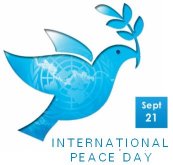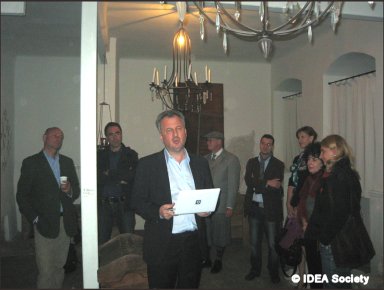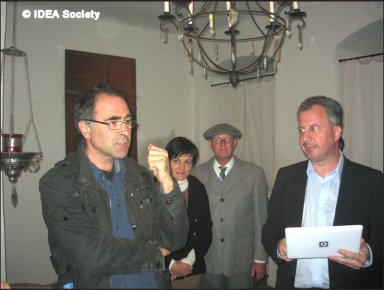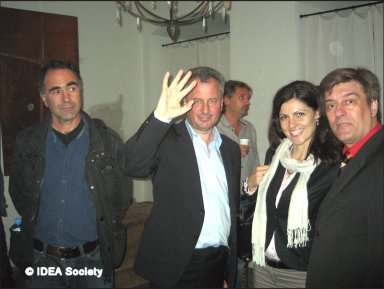|
 The International Day of Peace was established in 1981 by resolution 36/67 of the United Nations General Assembly to coincide with its opening session. In 2001, the General Assembly by unanimous vote adopted resolution 55/282, which established 21 September as an annual day of non-violence and cease-fire. The UN invites all nations and people to honor a cessation of hostilities during the Day, and to otherwise commemorate the Day through education and public awareness on issues related to peace. The International Day of Peace was established in 1981 by resolution 36/67 of the United Nations General Assembly to coincide with its opening session. In 2001, the General Assembly by unanimous vote adopted resolution 55/282, which established 21 September as an annual day of non-violence and cease-fire. The UN invites all nations and people to honor a cessation of hostilities during the Day, and to otherwise commemorate the Day through education and public awareness on issues related to peace.
"On the 11th of August 1939 the bells of the Cathedral in Port Victoria, Mahé Seychelles started to ring very loudly. That was the day I was born and my mother thought they were ringing to announce my arrival in this world. Unfortunately the bells were ringing to announce the beginning of the Second World War. I am now 72 years old and sadly realize how few lessons the Nations of the World took out of this dreadful war which saw so many people brutally killed in the name of human pride. I would have thought that the Second World War would have been sufficient for us all to realize that there’s no winner in any war. Nonetheless during these years of my life we have seen the war in Korea, the war in Vietnam, the war in the former Yugoslavia, the war in Iraq, the war in Afghanistan, the division of Ireland and the hostilities between Israel and Palestine. Not to mention the needless slaughtering of so many innocent civilians on every global spectrum. What a sad state of affairs! And what an alarming and menacing situation we are in against the background of today’s nuclear capacity in the control of states that are largely hostile to each other. It is obviously clear that we are now living in a world where might is right as opposed to a world where right is might. In the circumstances nations must realize that there’s no justification in calling each other “rogue states” and that in the global village of today we are all confined to be neighbors and therefore must learn to live together in peace by dialoguing, by making compromise and by the abandonment of forced power in the interest of cultural diplomacy."
Sir James R. Mancham, KBE
Founding President of the Republic of Seychelles
Gusi Peace Prize Laureate 2011 for Statesmanship
Member - Board of Advisors of the Institute of Cultural Diplomacy
“The Cultural Heritage of Societies can be acknowledge and appreciate through the Arts. Expressions of values and desires are reaching out through this Creative Power to enhance the Intercultural Dialog and to straighten Cultural Understanding. On the International Day of Peace the artists Giorgi Okropiridse and Milan Vukovich are emphasizing the common desire for World Peace. I hope that this message will be widely shared in our Society Today.”
Dr. Stefan Stoev
Founder and Chairman, IDEA Society
Ambassador for Peace, Universal Peace Federation
The IDEA Society acknowledges that day by organizing an ARTconnection event at the St. Basilius Hall, in the Garden Palace in Penzing, in cooperation with the Georgian Embassy.
The Artists: Milan Vukovich (Austria) and Giorgi Okropiridse (Georgia).
The event will be open to the public by free admission.
Welcoming Address from HE Ambassador Paata Gaprindaschwili (in German):
View/Download as PDF Document
Liebe Gäste der Ausstellung ARTconnection,
ich möchte Sie zum heutigen Internationalen Friedenstag gratulieren und uns allen ein friedliches, gewaltloses, tolerantes Zusammenleben wünschen.
Die Kunst war schon immer ein Vermittler, eine Brücke zwischen verschiedenen Völker und Länder. Ich hoffe, daß die heutige Veranstaltung auch ein Stück zum besseren gegenseitigen Verständnis, zur friedvollen Kommunikation beitragen wird.
Frieden war und bleibt besonders wertvoll für mein Land, es ist die Basis für eine rasche Entwicklung der Wirtschaft und des Handels im gegenwärtigen Georgien. So wird eine jede typische georgische Festtafel traditionell mit einem Toast auf Frieden eröffnet. In diesem Sinne, wünsche ich allen noch einmal die Gunst des Friedens.
Paata Gaprindaschwili
Botschafter von Georgien
in Österreich
Artist Statement (in German):
2011, lange her seit der Hochblüte der Moderne. Das Hintersichlassen religiöser Weltanschauungen in der Kunst, übernatürlicher Vorstellungen, Heilslehren, Symbolsysteme, Kulte und Rituale, dieses alles sich ersparen können ist kein thrill mehr. Reduktion als Ergebnis des Experimentierens, am Liebsten mit industriellen Werkstoffen mit "armer" Kunst, reißt ebenso wie seine theoretische Wurzel des Reduktionismus in der Philosophie niemanden mehr vom Hocker. Es war Revolution die Wahrnehmung von Kunst in allen Facetten sozialutopisch durchzuexerzieren. Bildhauer hauten alles zusammen, aus ihrer Intentionslosigkeit gingen die Stars aus ihren jewiligen Reduktionen hervor: Richard Serra, Donals Judd, Michelangelo Pistoletto, Jannis Kounellis, in ihrem Fahrwasser auch Gogi Okropiridze, sie zelebrieren nach wie vor Fe2O3, Eisenoxyd, gewöhnlich gelb rot oder braun gefärbt, kristallinisch oder amorph, rot braun violett bis fast schwarz, rostige Pracht als Matter of Time, Gogi sagt auch er will nichts. Ist das wahr? Gogi hier mit Milan in seinem Raum, St. Basilius hallt es von den leeren heiligen Wänden mit Gogis Wandstücken, hier ist seine Rückbindung, religare an das Mysterium, eignet sich das Revolutionäre auch für das Religiöse. Reduktion zur Religion hingeleitetes self-fulfillment als neuer kick off in der internationalen Kunstsprache? Oder es ist immer noch die Moderne.
Milan Vukovich



|